4 / 17 November
Today, the Church remembers two of the earliest Christian martyrs. Saints Nikandros and Hermaios probably lived in the first century. Their hagiography is recorded by an anonymous author in a manuscript titled Passio of Nikandros and Hermaios (BHG 2295). A study of this manuscript was published in German in 1980 in the Yearbook of the Austrian Byzantine Society (Jahrbuch der Österreichischen Byzantinischen Gesellschaft),1 but most of what is told and re-told nowadays comes from much shorter mentions in synaxaria.
Holy Martyrs Nikandros and Hermaios
Saints Nikandros and Hermaios were converted to Christianity by the Apostle Titus of the 70, who in turn was a disciple of the Apostle Paul. If this information is correct, then their martyrdom can indeed be dated to the first century. For their preaching of the Gospel and the converting of Pagans to the Christian faith, Saints Nikandros and Hermaios were arrested and sentenced to death by torture. Those who are interested in the details of torture methods in classical antiquity, can easily find the graphic description of their martyrdom in a number of sources. According to the Synaxarion, despite various attempts to kill them, the saints were miraculously preserved by God. Finally, metal stakes were driven into their heads, which, perhaps counterintuitively, is not always initially-fatal even without divine intervention, and still alive, they were buried in a pit. Portions of their holy relics presently rest in a monastery in Kalavryta, Greece.
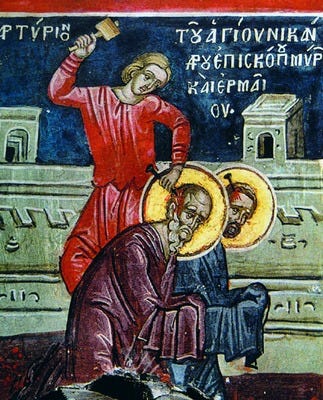
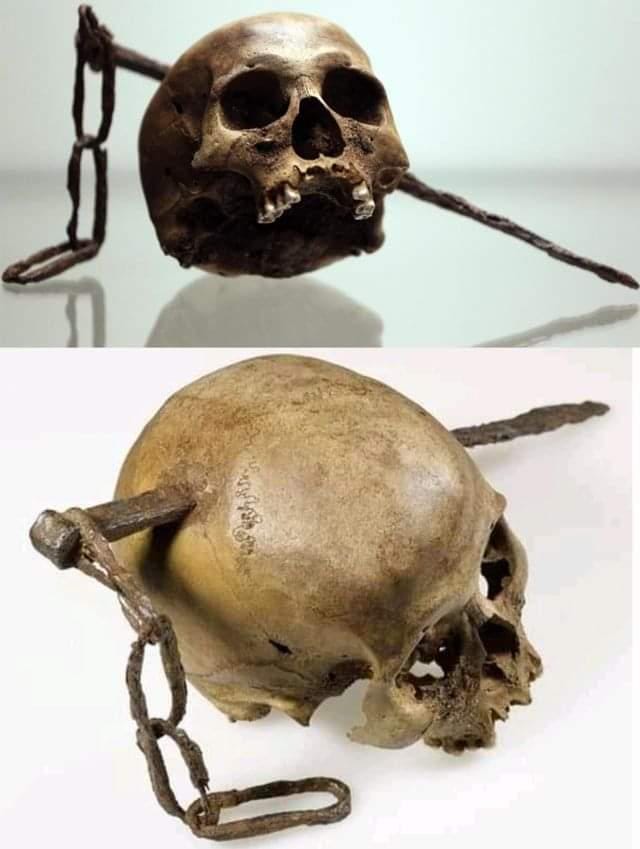
One detail from the hagiography of the Holy Martyrs Nikandros and Hermaios deserves special attention. It is said that they were both ordained priests by Titus. Furthermore, it is asserted - by Michel Le Quien, for example - that Nikandros was the first bishop of Myra in Lycia in present-day Turkey, where two centuries later, the famous Saint Nicholas would also become a bishop. According to Le Quien, the martyrdom of Saints Nikandros and Hermaios took place in the year 95.
It is somewhat unclear what the difference between the offices of a bishop and a priest would have been in a very small Christian community in Myra at the end of the first century. There does not appear to be any indication of distinct sets of duties performed by each holy martyr in their ministry. Perhaps, a better present-day comparison would be to a priest and a protopriest (Greek: πρωτοϊερεύς; sometimes incorrectly translated into English as “archpriest” - a different office which is roughly equivalent to that of a dean). Whatever the particulars, this may indicate that as early as the first century, there may have already existed a system of the hierarchy of honor, not only of function, even in the smallest Christian communities, like the one in Myra in Lycia, and that Nikandros was older, as the intuition of some iconographers appears to suggest, and treated with deference by the younger Hermaios.
Wolfgang Lackner / Graz, ‘Eine unedierte Passion der Märtyrer Nikandros und Hermaios (BHG 2295)’, JÖB 29 (1980), 99–131.

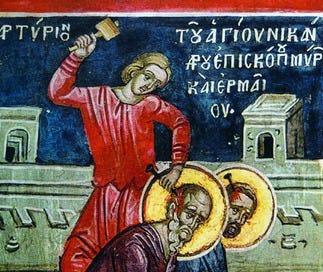
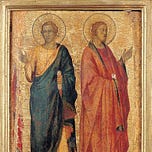






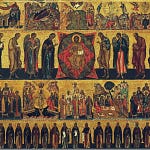


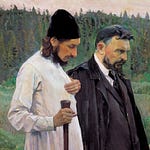

Share this post